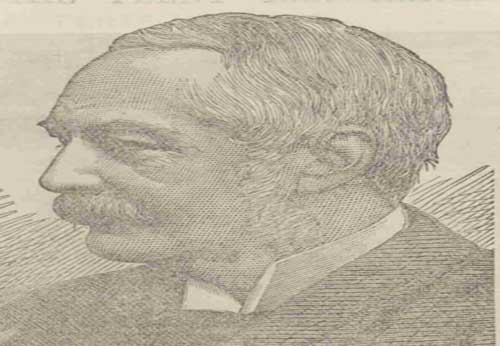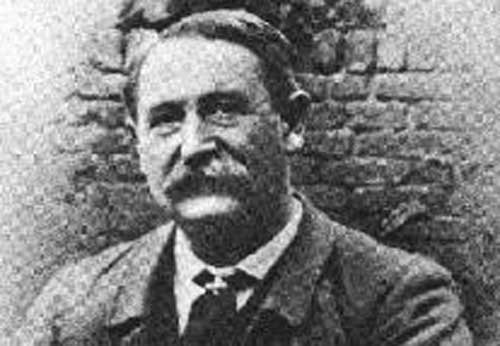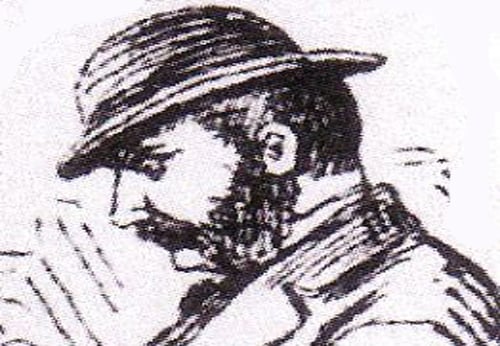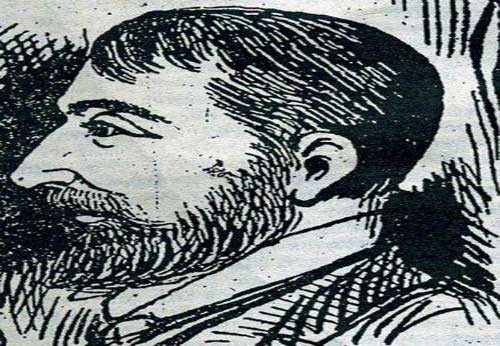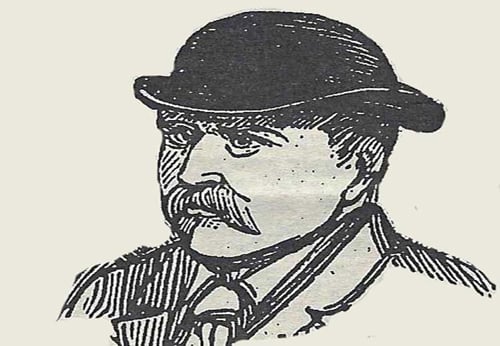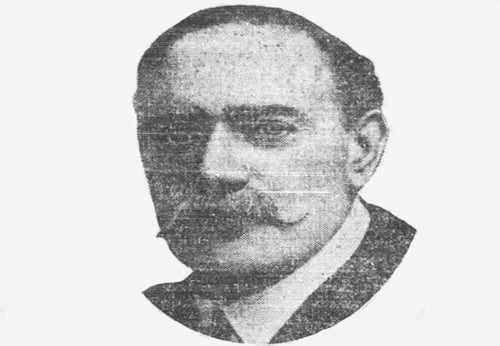- The police investigation into the Jack the Ripper crimes was ultimately a failure since they didn's catch the murderer.
- In fairness to the Victorian detectives their hunt was hampered by a lack of many of the modern investigative techniques available to modern police forces.
- However, it cannot be denied that the police hunting the killer did make several fundamental mistakes.
- Site Author and Publisher Richard Jones
- Richard Jones
JACK THE RIPPER - THE POLICE INVESTIGATION
A DIFFERENT TYPE OF CRIME
The Jack the Ripper Murders presented the Victorian Police with a type of crime that they had little experience of handling.
The detectives who dealt with the investigation into the killings found themselves pitting their wits against a lone assassin who wasn't leaving them any clues to go on.
In addition the murderer was committing his crimes in one of the most crime ridden quarters of Victorian London, where the secrecy of the criminal elements greatly hampered the police as they struggled to find the killer.
MODERN INVESTIGATIVE TECHNIQUES NOT USED
Another aspect of the case was that the police who conducted the investigation into the Jack the Ripper murders lacked many of the techniques that their 21st century counterparts would take for granted in a murder investigation of this kind.
Fingerprinting, Crime Scene Investigation, modern forensics and even Crime Scene photography were simply not used in police investigations at the time of the Jack the Ripper Murders.
THE MEDIA NOT UTILISED
In addition the use of the media was not recognised as being a useful means of bringing a killer such as Jack the Ripper to book.
Today the police would utilise the press in an attempt to gain valuable information.
But the attitude of the Victorian Police was to keep journalists at arms length out of a fear that they might reveal their lines of enquiry to the criminal.
The press reacted to this lack of co-operation by grubbing around for any morsels of information that they could find and showed their frustration at the police's refusal to share information by subjecting the police to a barrage of criticism.
POLICE MORALE LOW
This criticism can have done the morale of the detectives who were carrying out the police investigation into the Jack Ripper murders no good.
That morale had already been sapped by a series of squabbles, resignations and general back biting between senior officers and Home Office mandarins that, in the words of one popular publication, had effectively decapitated the detective department at Scotland yard.
But, to chart the course of the police investigation into the Whitechapel Murders, we must first look at the structure of the Criminal Investigation Department of the Metropolitan Police, and our story begins in 1878 - ten years before the Jack the Ripper Murders would expose the flaws of those long ago detectives by exposing them to a new type of crime of which they had little understanding.
THE CRIMINAL INVESTIGATION DEPARTMENT
The overall responsibility for hunting Jack the Ripper fell to the Metropolitan Police’s Criminal Investigation Department (CID) which had been founded in April 1878, following a re-organisation of the original Scotland Yard Detective Branch after several detectives had been jailed for being in the pay of a gang of swindlers.
This new department (which was quickly dubbed the Defective Department and the Criminal Instigation Department by Punch) was put under the command of a vigorous young barrister by the name of Howard Vincent, who was given the title of ‘Director of Criminal Investigations.’
Although he wasn't officially called the Assistant Police Commissioner his position meant that he was this in all but name.
Vincent was responsible directly to the Home Office and not to the Metropolitan Police Commissioner.
This was a slightly strange arrangement as his underlings were responsible to the Police Commissioner.
The first ten years of the Criminal Investigation Department's existence (1878 - 1888) had been marred by in-fighting, back biting and power struggles between senior officers, Home Office officials and political mandarins.
This constant turmoil meant that, by the time of the Jack the Ripper murders the individual detectives who worked for the department were severely demoralised.
By 1884 Vincent had decided that his post with the Metropolitan Police offered him little hope for advancement and he had been trying to resign for over a year.
However, when on 30th May 1884, Fenian terrorists succeeded in detonating a bomb directly under the office of Scotland Yard's Special (Irish) Branch, Vincent decided enough was enough and he resigned to pursue a career as a Tory Member of Parliament.
JAMES MONRO
His Place was taken by James Monro, a dour Scot, who developed an extremely frosty relationship with Edward Jenkinson, who was running a secret Home Office department that was attempting to infiltrate Fenian terrorists.
Jenkinson's dubious, and extremely secretive, methods caused Monro a great deal of concern and for several years he and Jenkinson enjoyed a working relationship of mutual loathing and mistrust.
Ultimately Monro would emerge as the victor when Jenkinson was forced to step down in January 1887.
Jenkinson's secret department was promptly closed down and Monro added the position of head of a new department, Section D, to his duties as head of the CID.
DR. ROBERT ANDERSON
One person whom Jenkinson had developed a dislike for was Robert Anderson, a Dublin born lawyer who had been brought to London in 1876 as part of an intelligence branch to combat the threat of Fenian terrorism and who had been forced out of his post by Jenkinson in 1886.
But when Monro took over his duties as head of Section D he needed an intelligence specialist.
Thus, in February 1887, Robert Anderson was appointed Monro's "assistant in secret work" and the two men became close friends.
Unfortunately, the two jobs caused something of a professional conflict for Monro. As head of the CID he was accountable to the Metropolitan Police Commissioner, Sir Charles Warren. But as head of Section D he reported directly to the Home Office.
This placed Warren in the untenable position of having a subordinate officer over some of whose duties he had neither authority or influence, and this, in turn, sowed the seeds for discord between the two most senior Metropolitan Police officers.
One bone of contention between the two men was that Monro considered the number of detectives woefully inadequate.
POLICE NUMBERS
There were, so the Pall Mall Gazette reported, "...not quite 300 men, all told, 80 of whom are inspectors and 120 sergeants, with less than a hundred other distributed about the twenty-two metropolitan divisions..."
Monro had recognised the need for more detectives if the Metropolis was to be effectively policed and he duly applied to Warren for an increase in man power.
Warren was adamant that no such increase was necessary and argued that constables in plain clothes were just as effective as detectives.
RESIGNATION AND RECUPERATION
In late 1887 Monro complained to Warren that he was overworked and suggested that a friend of his, Melville Macnaghten, be appointed Assistant Chief Constable.
However, Warren vetoed Macnaghten's appointment and, as a result, Monro resigned as head of the CID.
His resignation became effective on August 31st 1888, the day of the first Jack the Ripper Murder, that of Mary Nichols.
His replacement was Robert Anderson.
Anderson's Secret work had, however, left him suffering with exhaustion and, as result, his doctor advised an immediate recuperative break.
So, within a week of taking up his post as head of the CID, Anderson left London for Switzerland, and the hapless detectives serving under him, who had watched the animosity between Warren and Monro escalate, now found themselves leaderless as the Jack the Ripper crimes escalated and stretched their resources to the limits.


